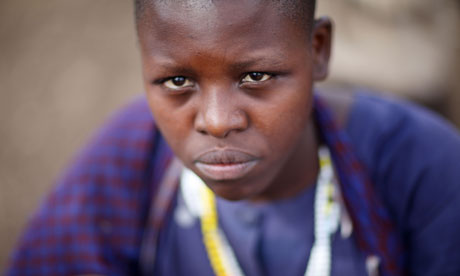
In Tanzania's remote Newala District, adolescent girls are met with unwanted sexual advances on their way to the neighbours' house, to the water well, to the store. They often feel forced to give in. Sometimes, they're raped. Girls are even scared to go to school because, they say, some teachers "just want to have sex with you."
Such sexual violence puts 12 to 17-year-old girls in these Tanzanian communities at greater risk of being infected by HIV. They're not alone. Globally, girls and young women are more likely to be HIV-positive than their male peers, with females accounting for more than 60% of people between the ages of 15 and 24 living with HIV.
At the heart of these statistics lies the reality that girls' lives are shaped by gender inequalities and norms that are harmful to their mental and physical wellbeing. This was true of the environment in Newala District where International Centre for Research on Women researchers embarked on a participatory research project to better understand the myriad ways that adolescent girls are susceptible to HIV, and design a programme that addressed their most pressing risks. Called "Vitu Newala" or "Yes Youth Can," the effort was conducted in partnership with Taasisi ya Maendeleo Shirikishi Arusha (Tamasha) and funded by ViiV Healthcare's Positive Action programme.
Through this project, we learned that to effectively understand and address the sources of girls' HIV risk required placing the girls themselves at the centre of both research and programming agendas – not as passive recipients but as active contributors. This approach does not treat girls as voiceless beneficiaries of a pre-packaged HIV prevention effort. Instead, it enables girls to define and address their own needs.
We accomplished this through an inclusive process that began with our local partner, Tamasha, informing community leaders about our initiative, who in turn nominated several potential candidates to serve as "youth researchers" for the project. Tamasha then interviewed them to assess literacy levels and their willingness to discuss sensitive issues.
In the end, nine young women, ages 18 to 24, were selected. We conducted formative research in four rural communities through a series of Participatory Learning and Action sessions with 82 girls ages 12 to 17 – all of which were led by the youth researchers. The exercises included having girls draw a map of where they feel unsafe in their community, discussing obstacles they face in achieving their dreams, and listing their perceived risks to HIV. Meanwhile, our team interviewed adults – parents, community leaders, service providers – to learn whether and how they thought about girls' vulnerabilities and how the community could better safeguard girls' health and wellbeing.
This participatory process revealed that girls' primary concern was not HIV, but rather, preventing unintended pregnancy and being protected from sexual violence. It was an essential lesson that required us to adjust our preconceived, narrow HIV-prevention focus for the intervention to also include pregnancy and sexual vulnerabilities.
This is a lesson from our experience for all global development professionals: when working with vulnerable adolescents – who are traditionally voiceless – it is critical that researchers and programmers align their project priorities with young people's priorities, establish a trusting, honest environment with youth, and provide intensive support to keep them engaged.
What made Vitu Newala innovative is that we relied on the young researchers to fine-tune our formative research protocol. They then shared their findings with ICRW researchers and Tamasha, and together we arrived at joint conclusions about the structure and priorities of the subsequent intervention project. They also contributed content and case studies for a life skills education curriculum, and served as mentors to peer facilitators who were later trained to implement the project.
This research strategy also cultivated an environment that encouraged open, non-judgmental dialogue. Adults and youth felt safe to open up about girls' risk of HIV and early pregnancy and the need for increased social protection and response. Importantly, youth gained a voice they rarely have in strongly patriarchal societies, which enabled the project to reveal sources of risk and identify solutions that would not have emerged from a more conventional research approach. The effort offered young people the opportunity to be champions for social change in their own communities.
Ultimately, transforming entrenched behaviours such as those that put girls in Newala at risk will be a gradual process. Behaviour change begins at the community level, with adults taking responsibility for girls' safety, men and boys not having such exploitative expectations of girls as sexual objects, and girls being empowered to protect themselves. Our pilot project began to spark such changes. And today, Tamasha is working to expand the project into surrounding communities so they can strengthen the network of young people and provide more training to a new crop of peer facilitators.
Jennifer McCleary-Sills is a senior social and behavioural scientist at the International Center for Research on Women. You can follow her organisation @ICRW
This content is brought to you by Guardian Professional. To get more articles like this direct to your inbox, sign up free to become a member of the Global Development Professionals Network

